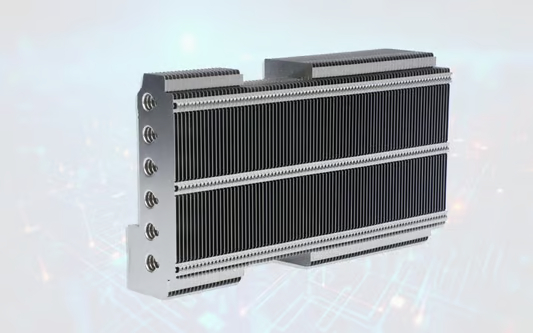The Process of Stamping Fins: A Comprehensive Guide
Stamping fins is a crucial process used in various industries, such as HVAC, automotive, and aerospace, to manufacture efficient heat exchange systems. Fins play a vital role in enhancing heat transfer by increasing the surface area available for heat dissipation. In this article, we will delve into the process of stamping fins, exploring each step and its importance. So, let's dive in!
Understanding the Importance of Fins in Heat Exchange Systems
Before we delve into the process of stamping fins, it's essential to understand the significance of fins in heat exchange systems. Fins are thin, elongated metallic structures that are attached to heat transfer surfaces, such as radiators or heat exchangers. They serve the purpose of increasing the surface area in contact with the fluid or air, thereby enhancing heat transfer efficiency. By stamping fins, manufacturers can maximize the performance of heat exchange systems.
Step 1: Designing the Fin Pattern
The first step in the process of stamping fins is designing the fin pattern. This involves determining the shape, size, and spacing of the fins. The design considerations depend on the specific application and desired heat transfer characteristics. Factors such as fluid flow, pressure drop, and heat load need to be taken into account. Computer-aided design (CAD) software is commonly used to create precise fin patterns.
Step 2: Material Selection
Choosing the right material is crucial for the performance and durability of stamped fins. The material should have excellent thermal conductivity, corrosion resistance, and mechanical strength. Aluminum and copper alloys are commonly used due to their favorable properties. The material selection depends on the specific heat transfer requirements, environmental conditions, and budget constraints.
Step 3: Material Preparation
Once the material is selected, it needs to be prepared for the stamping process. This involves cleaning the surface to remove any impurities or contaminants that could affect the quality of the stamped fins. Surface treatment techniques, such as degreasing and pickling, are employed to ensure optimal adhesion and uniformity of the fins.
Step 4: Stamping Die Design and Fabrication
The stamping process requires a specialized tool known as a stamping die. The die is designed and fabricated to accurately replicate the desired fin pattern. The die consists of male and female components that create the necessary impressions and cavities to shape the fins. The design of the stamping die is critical to achieve precise and consistent fin dimensions.
Step 5: Stamping Process
Once the stamping die is ready, the actual stamping process can begin. The material is placed between the male and female components of the die, and high pressure is applied to deform the material into the desired fin shape. The stamping process may involve multiple stages to achieve complex fin designs. Careful control of pressure, temperature, and speed is essential to ensure the quality and accuracy of the stamped fins.
Step 6: Finishing Operations
After the stamping process, the fins undergo various finishing operations to improve their surface quality and functionality. These operations may include deburring, edge trimming, and surface treatment, such as anodizing or coating, to enhance corrosion resistance and aesthetics. Finishing operations play a crucial role in ensuring the overall performance and longevity of the stamped fins.
Step 7: Quality Control and Inspection
To ensure the compliance of the stamped fins with the required specifications, rigorous quality control and inspection procedures are implemented. Measurements, such as fin thickness, spacing, and angle, are checked using precision instruments. Additionally, visual inspections are conducted to detect any surface defects or imperfections. Only fins that meet the specified criteria are approved for further use.
Step 8: Assembly into Heat Exchange Systems
Once the stamped fins pass the quality control checks, they are ready for assembly into heat exchange systems. The fins are typically attached to tubes, plates, or other heat transfer surfaces using various methods, such as brazing, soldering, or mechanical fastening. The assembly process ensures proper alignment and secure attachment of the fins, enabling efficient heat transfer.
Step 9: Testing and Performance Evaluation
Before the heat exchange systems are deployed, they undergo rigorous testing and performance evaluation. Various parameters, such as heat transfer rate, pressure drop, and thermal efficiency, are measured and compared against the desired specifications. This step ensures that the stamped fins and the overall system meet the performance requirements and function optimally.
Step 10: Maintenance and Service Life
Once the heat exchange systems are in operation, regular maintenance is essential to ensure their longevity and efficient performance. Cleaning, inspection, and periodic servicing help prevent fouling, corrosion, and other issues that can affect the performance of the fins. Proper maintenance extends the service life of the stamped fins and the overall heat exchange system.
stamping fins, heat exchange systems, fin pattern, material selection, material preparation, stamping die, stamping process, finishing operations, quality control, assembly, testing, maintenance What is the process of stamping fins?? A Comprehensive Guide Discover the step-by-step process of stamping fins, including designing the fin pattern, material selection, stamping die fabrication, and more. Learn how this crucial process enhances heat transfer efficiency in various industries.

